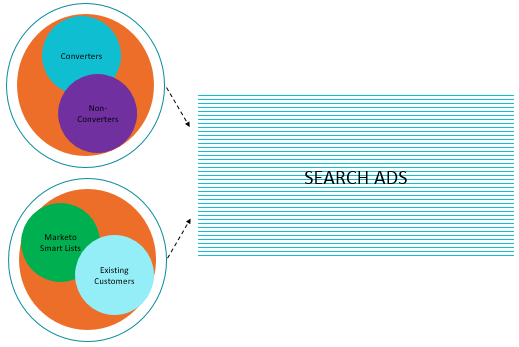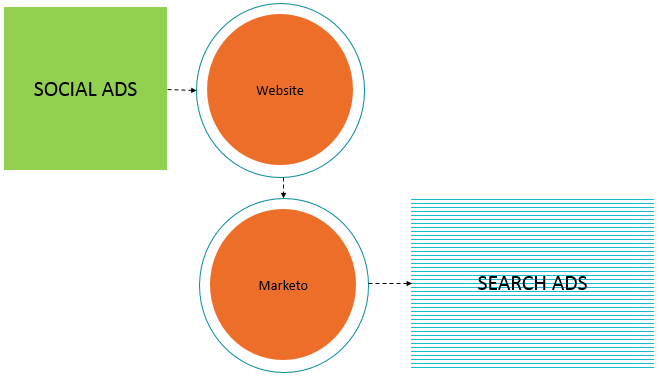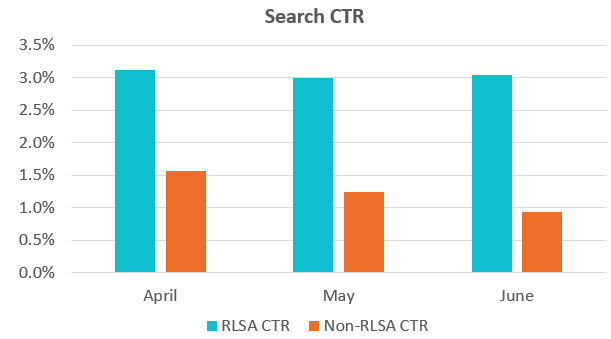Defining a Strategy for RLSA
AdWords Remarketing List for Search Ads (RLSA) campaigns have been around for quite some time, and yet most of the strategies provided by the industry at this point seem straight from Google’s initial press release. Bidding more, updating ad copy, and/or broadening keyword targeting has only one certain outcome: making Google more money. As B2B marketers, we need to be more strategic.
The B2B sales environment, typically requiring 5+ decision-makers and 13+ touch points, is prime for RLSA. Potential customers research different solutions, explore their pain points, and narrow down their vendor list. If you are able to solidify your position as a thought leader during this process, the better opportunity you will have to close the sale. Like lead nurturing and marketing automation, significant thought needs to be put into your RLSA strategy.
In creating an RLSA strategy, you should consider multiple variables:
- Audiences targeted
- Buying stage
- Opportunities for cost savings
- How to manage branded campaigns
- Success metrics
An Audience-Specific Strategy
Site visitors differt. Compare an anonymous visitor to a a known lead. With an anonymous visitor, your main goal is to gather information about the visitor (email address, name, phone, etc.). Once a lead is known, the value in obtaining an email address plummets, and the value in pushing the account down the sales funnel skyrockets. We need different strategies in running RLSA campaigns targeting each audience. An RLSA campaign targeting unknown visitors (in Obility terms: non-converters) could offer relevant compelling content in exchange for contact information, while an RLSA campaign targeting known visitors (in Obility terms: converters) could focus on later stage offers (demo, free trial, webinars, events) and lead nurturing.

Structuring RLSA campaigns for non-converters and converters is just the start of an effective RLSA strategy. Why not stop paying for clicks from unqualified leads? Why not create industry-specific campaigns? How about emphasizing target accounts? By integrating your CRM, DMP, or marketing automation platform with Google Analytics, you can better target specific site visitors. Again, not every visitor is the same, and we should be creating strategies for specific audiences rather than one strategy for all audiences. Marketo RTP makes this process incredibly easy. If you currently are not using Marketo RTP, Google Analytics also provides data import functionality.

In creating Remarketing audiences to target with RLSA, a major concern is audience size. You do not want to get too granular as you want enough impressions to develop ad and keyword history. Avoid trying to create ads or content for specific companies. Focus on industries and verticals. A good rule of thumb is to target a minimum of 1,000 users for each audience.
Ads & Offers Correlated to Audiences
As we mentioned above, you can use different stage offers for non-converter and converter audiences. You can also create relevant industry-specific ads and use industry-specific offers in an industry-targeted RLSA campaign. This creates a personalized, relevant experience for your target buyer. However, we can do more. With the tools available to us, we need to go beyond personalized ads. We should create integrated campaigns that not only take into account multiple channels.
For example, imagine running a campaign across multiple ad networks targeting CIOs. You have setup campaigns on LinkedIn, PureB2B, and IDG, and you are touting a Gartner paper about “B2B Modernization”. With RLSA, you can target site visitors from these campaigns who later search for “b2b modernization” on Google and incorporate information relevant to the original analyst report in your ad text. Furthermore, you can offer a new white paper or webinar that helps push those users down the funnel.



RLSA Minimize Wasted Spend
Despite Google’s best intentions, RLSA is a great opportunity to reduce your spend. As mentioned above, RLSA not only provides the opportunity to add audiences, it also provides the opportunity to avoid showing your ads to specific audiences. This is great for companies that can import unqualified leads or competitor segments. Additionally, if your company only targets enterprise companies, you may be able to avoid targeting SMBs with Marketo RTP or similar service. Determining what audiences you want to eliminate from your campaigns can be just as valuable as understanding what audiences you want to target.
Past site visitors are also going to be more familiar with your brand. In most cases, the clickthrough rate (CTR) of RLSA campaigns is higher (see chart below based on Marin’s client benchmark). You have the opportunity to use higher CTR to improve ad position or lower your cost per click (CPC). Your strategy should be tied back to the audience you are targeting and historical data. If past visitors are going to continue to click on your ad at a lower position, save the money and find the threshold position where CTR starts to dip. If the incremental increase in clicks helps drive a few extra leads toward opportunity, consider gunning for top position. However, we would argue your first impulse should be to save money rather than increase RLSA bids.

Another opportunity to reduce your spend is to change how you target keywords in RLSA campaigns. You can consider a number of approaches: expand/tighten keywords targeted or broaden/tighten match type. Expanding the number of keywords targeted may make sense if you have budgetary restraints holding you back from running specific paid search campaigns. Running an RLSA campaign prior to launching a new search campaign could provide a lower initial investment and cheaper CPCs. Additionally, targeting more broad match keywords with your RLSA campaigns could significantly reduce costs. Experimentation may be key to success for reducing overall cost with RLSA.
Is Brand Targeting Worth It
Another big question with RLSA is how to handle brand targeting. Does it make sense to pay for branded keywords for people already familiar with your site, especially for converters who are already in your sales database? The main concern here is that a competitor could potentially swoop in and steal a click if you don’t run an ad. The safe bet is to always run branded campaigns except for where budget is extremely tight. In these cases, you may consider trusting your organic placement to gain the vast majority of branded traffic.
Evaluating RSLA Campaign Success
With different audiences, your success metrics should differ. For a non-converter audience, your expectation should be to get contact information, and you should have a target cost per net net lead. For converter audiences, you should have a target cost per success – the value of a touch in the sales process. When evaluating RLSA campaigns, the best approach is to separate and measure the lead generation campaigns differently than the demand generation campaigns.
Budgets should be allocated based off separate goals. RLSA lead gen campaigns are focused on adding net new leads to the sales database while RLSA demand gen campaigns are focused on moving the lead down the funnel. While lead gen campaigns should be measured by cost per new lead, MQL, or SAL, demand gen campaigns should not.
The Stakes are Higher
In the end RLSA campaigns are not much different than retargeting campaigns that you run with Google, AdRoll, or LinkedIn. They are similarly complex in that each audience provides new challenges for targeting and measuring success. The main difference with RLSA campaigns is that paid search is significantly more expensive than most display campaigns. The stakes are higher. The potential savings and impact on sales are higher. Furthermore, RLSA provides the opportunity to integrate display campaigns with search unlike what has been done in the past. The tough part is figuring out your strategy.
